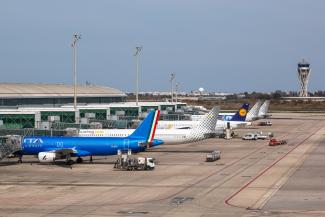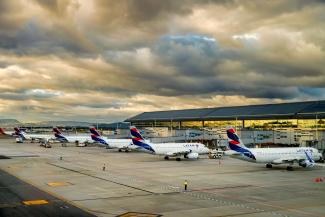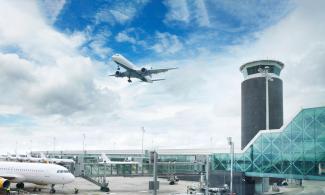The concept of Artificial Intelligence (AI) is nothing new. It has had different meanings and has appeared in various contexts, from science-fiction movies to virtual assistants integrated within smartphones. It was first defined in 1959 as “the ability to learn without being explicitly programmed” by Arthur Samuel, a former IBM employee and Professor at Stanford University in the U.S.
Therefore, what makes AI (and also Machine Learning) so interesting? It can provide invaluable help in many situations. AI and ML can prove critical whenever a problem solver finds is too difficult to program manually (e.g. vision, speech), when the system needs to adapt to a changing environment (e.g. fault detection), or when we want the system to perform better than under human programmers for reasons of privacy/fairness (e.g. ranking search results), etc.
Instead of hard-coding software routines with specific instructions to accomplish a particular task, machine learning is a way of “training” an algorithm so that it can learn how to “do it”. This capability can save us a lot of time during the software development phase. It also opens up unprecedented opportunities to gain new insights into historical business issues and to unveil performance interdependencies and hidden patterns within the data for engineers and operators.
A machine can learn in three ways, based on the data observed within a real environment:
- Supervised Learning: learning with a labeled training set (e.g. an email spam detector with a training set of already labeled emails).
- Unsupervised Learning: discovering patterns in unlabeled data (e.g. cluster similar documents based on the text content).
- Reinforcement Learning: learning based on feedback or reward. (e.g. learn to play chess by winning or losing).
Regardless of the method chosen to train the algorithm, the larger and more accurate the available dataset, the better the performance of the algorithm will be.
The value of data
In every domain of our daily lives, the availability of data is continuously growing—generated by personal devices, cyber-physical systems, the Internet of things, cloud computing and cognitive computing, etc. The availability of this vast amount of structured and unstructured information has created the basis for a new industrial revolution, commonly referred to as the fourth industrial revolution.
An the aviation business is part of it! The newest generation of aircraft embark thousands of sensors and sophisticated digitized systems, generating more than 30 times the amount of data than the previous generation of wide-bodied jets. By 2025, the annual data generation should reach 98 billion gigabytes, or 98 million terabytes.
The technological revolution enables Airlines to streamline operations in a dynamic way. They are able to recover from disruptions caused by unexpected delays and can optimize maintenance by making it quicker and easier to transmit information to the ground maintenance teams (via avionics systems). The new systems can provide updates on the current flying conditions and any faults that have occurred during the flight. In addition, most innovative Airlines are finding unprecedented opportunities to improve revenue management, marketing and customer retention.
Applications to Air Traffic Management
Airlines are fast movers and are investing to effectively extract value from their data to get a competitive advantage over competitors, but the world of Air Traffic Management (ATM) has not lagged behind.
In fact, this industry is a perfect candidate to exploit the improvements brought by AI because:
- It is a dynamic and complex system composed of many interconnected components that will result to be intractable with classical analytical methods;
- It is technologically advanced and rich in data, since modern automation systems for ATC are capable of integrating radar information, flight plans and weather information with the data from Controller-Pilot data link;
- Many basic tasks executed by air traffic controllers are repetitive, follow well-defined procedures and are eligible for automation under the most nominal conditions.
So far, most of the work in Europe has focused on exploratory research efforts, aimed at evaluating the potential of different AI and ML techniques to solve typical problems in this domain such as the assessment of system performance trade-offs, pro-active risk management or automatic speech recognition.
EASA is building the Data 4 Safety Programme, which has the ambition to bring together all the relevant aviation stakeholders and centralizing the collection of safety data into and integrated Big Data platform to provide a consolidated overview. The data will then be integrated into a Big Data platform feeding the development of business-intelligence and machine-learning algorithms to identify safety issues, assess risk and measure the effectiveness of safety actions.
This EASA program builds upon the success of several scattered local initiatives undertaken by ANSPs such as NATS to predict safety events and operational performance issues in general.
Recently, the Network Unit at the EUROCONTROL Experimental Centre in Bretigny has launched a study with ALG aimed at developing ML algorithms to predict the nominal airspace capacity of new Dynamic Airspace Configurations (as defined by PJ08 of SESAR 2020). The Project will develop an Artificial Neural Network and test the suitability of AI to support the identification and activation of optimal sector configurations, depending on a wide range of variables and their expected impact on airspace capacity.
Meanwhile, the engineers at the EUROCONTROL Maastricht Upper Area Control Centre (MUAC) have already integrated a neural network algorithm into their existing trajectory predictor. The results are substantially more accurate than the traditional predictions. The lateral error of the predicted trajectories can be reduced by half in the majority of flights, without causing a negative impact on the rest of cases. The new predictors are at the disposal of flow managers alongside the ones calculated by the classic system, allowing the coexistence of the two systems and easing the operational validation and transition phases.
Expected impact, risks and drawbacks
The EC High Level Group on Industrial Technologies recently identified AI as a new key enabling technology that can recover competitiveness of the European Industry, create high-quality jobs, improve people’s lives and create future prosperity. It also identified it as a priority policy area in future EU industrial research. AI is already considered strategic technology by China (according to its Made Strategy 2015), by South Corea (judging by a USD 1.5 Billion initiative) and by the U.S. as a part of strategic program run by the National Science Fundation.
The maximum level of expectations about Machine Learning was achieved in 2017 and it is expected that within 2 to 5 years it will achieve mainstream adoption.
Overall the market for applications and services enabled by Artificial Intelligence in Aviation worldwide was valued at USD 112 Million in 2017, and it is likely to reach USD 2 billion by 2025.
The latter value will be obtained through improved customer experience, new revenues from existing and future services, and through cost reduction thanks to increased productivity. Every stakeholder can experience the benefits of AI by developing or operating their working solutions in a much more effective, adaptive and resilient way than with the classical decision-support tools.
At the same time, the centrality of safety aspects in the Air Traffic Control function creates some major concerns regarding safety and cyber-security aspects linked to the use of big-data and ML techniques in real operations.
The reliability and stability of the new AI-based systems has still to be proven in both machine-to-machine and for human-machine interactions, and it will take some time before the operators fully trust the new system and become part of routine tasks. The best approach is to begin by collecting and analyzing operational data in a structured and automated way. The results obtained feed a systematic analysis of past performance, revealing specific candidate areas for the application of AI whilst building up the datasets so that ML algorithms can learn from the past and fully exploit their potential.
The initial application of AI-based tools to the automation of non-safety critical tasks (e.g. sector opening schemes, long-term traffic predictions, ATCO rostering) will gradually prove their added value and earn the trust of workforce and top management—ultimately evolving to higher levels of automation.
At ALG together with our sibling company Minsait (both belonging to the Indra Group) we can support every actor in aviation in successfully undergoing this digital transformation, by providing the complete set of required operational and technical skills needed to ensure a successful transition at all levels of your organization.











































































